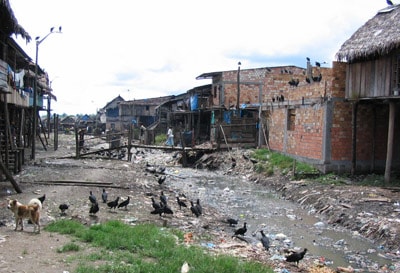Global WASH Health Burden

Hundreds of millions of people worldwide do not have access to clean, safe water.
Water is considered to be the most important resource for sustaining ecosystems, which provide life-supporting services for people, animals, and plants 1. Because contaminated water is a major cause of illness and death, water quality is a determining factor in human poverty, education, and economic opportunities 2.
Unfortunately, declining water quality threatens the health of ecosystems and humans worldwide 2. Various factors influence this deterioration, including population growth, rapid urbanization, land use, industrial discharge of chemicals, and factors resulting from climate change.
Today, hundreds of millions of people do not have access to improved sources of drinking water 3,4, leaving them at risk for water-, sanitation-, and hygiene- (WASH) related diseases. Worldwide in 2015, 500,000 children died from diarrheal illnesses, most of which are caused by unsafe water, poor sanitation, and inadequate hygiene 3,4. Devastating epidemics of cholera, such as the epidemics that have swept through Africa causing more than 71,176 cases of illness and 937 deaths in 2015 alone, are only the “tip of the iceberg,” as most waterborne diseases, illnesses, and deaths are never reported 5,6.
Responding to these challenges requires a spectrum of interventions. The prevention or minimization of water pollution is critical to improving drinking water quality. Interventions to improve drinking water quality range from disinfecting water at the household level [point-of-use (POU) treatment] to water management at the community level [Water Safety Plans (WSPs)]. In some situations, more than one type of intervention is needed. For example, both POU treatment and WSPs may be needed for piped water systems with intermittent service. When this happens, the different interventions are complementary, not competitive.
References
- The United Nations Environmental Programme. Report: Water security and ecosystem services: The critical connection. [PDF – 56 pages] 2009.
- UNESCO, Earthscan. The United Nations World Water Development Report 3: Water in a changing world. [PDF – 429 pages] 2009.
- GBD 2015 Mortality and Causes of Death Collaborators. Global, regional, and national life expectancy, all-cause mortality, and cause-specific mortality for the 249 cuases of death, 1980-2015: a systemic analysis for the Global Burden of Disease Study 2015. [PDF – 86 pages] Lancet. 2016;388:1459-544.
- WHO, UNICEF. Progress on drinking water and sanitation: 2015 update and MDG assessment. [PDF – 90 pages] 2015.
- WHO. Weekly epidemiological record: Cholera, 2015. [PDF – 8 pages] 2016.
- Mintz ED, Guerrant RL. A lion in our village – The unconscionable tragedy of cholera in Africa. N Engl J Med. 2009;360:1060-3.
